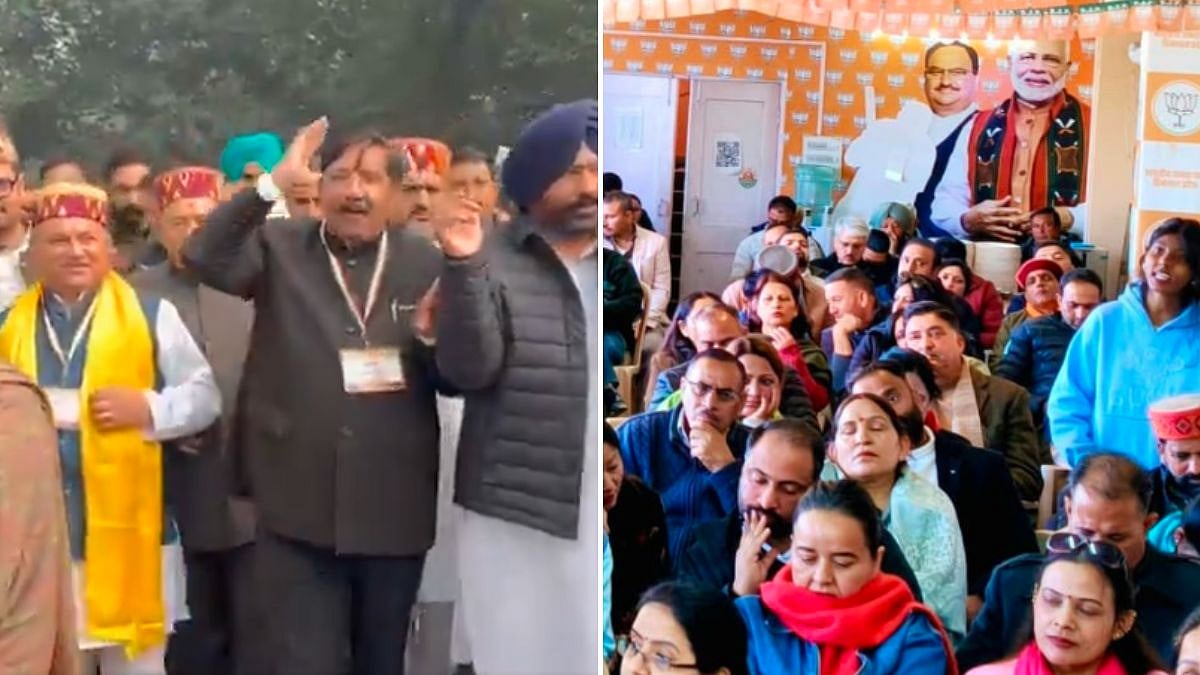On March 24, at 8 pm, Prime Minister Narendra Modi delivered a televised address to the nation, announcing a complete nationwide lockdown from midnight. The announcement gave people just four hours to prepare themselves for what turned out to be the world’s largest and stringent lockdown, aimed at containing the spread of the coronavirus, though at the time there were only 500 recorded cases and 10 deaths. However, through the next few weeks and later months, the lockdown triggered a huge humanitarian crisis. Tens of thousands of migrant workers, rendered jobless overnight due to the lockdown, had no means to survive without wages and shelter and started journeying to their villages and hometowns on foot or whatever transport they could manage.
It was the worst migrant crisis in several decades, as helpless people were forced to travel hundreds of kilometres, in many cases, on foot and on empty stomachs in scorching summer heat, in a desperate attempt to reach their homes. Men, women, children and the elderly, they all wanted to escape the cities. Many died on the road: some due to hunger, some due to exhaustion and dehydration and some were crushed to death under trains, buses and trucks. The scale of the crisis was so unprecedented that streams of visuals and stories of distress were widely reported for weeks in regional, national and international media. The public and political uproar of the unfolding tragedy reached the Supreme Court. But the crisis continued as the court was told by the Government that there were no migrant workers on the road.
While the court took the Government at its word, thousands of migrant workers, in the absence of food, jobs and transport, continued with their epic journeys home on foot, cycles, tempos and trucks. Faced with criticism from Opposition parties and human rights activists for not arranging travel facilities for migrant workers either before or during the lockdown, the government finally buckled under pressure from state governments and announced the movement of workers by Shramik special trains and buses from May 1, to ferry people home. By then enough damage was done and many migrant workers had already died in their failed attempts to reach home. The migrant workers’ crisis may no longer hog headlines, but some of the most gripping images of horrific tragedies are still vivid in memory.
What’s surprising is that more than five months after the migrant crisis started unfolding, the Government has not maintained any data on the deaths of migrant workers and the job loss suffered by them. At least that’s what it said in Parliament last week, in response to questions by 10 MPs on the migrant workers crisis. The Central Labour ministry was asked whether the Government had any data on migrant workers who returned to their states during the lockdown. The ministry was also asked whether the government was aware that a number of migrant workers had lost their lives during the return to their hometowns and the details if any. Additionally, the Government was also asked about the economic assistance or compensation given to such families. In his written response, minister of state for labour and employment Santosh Kumar Gangwar said, “No such data is maintained,” hence the answer to the question of compensation “does not arise”, since there is no data.
When asked if it had done any assessment of job losses among migrant workers due to the pandemic-induced lockdown, the Government’s response was the same: “No such data is maintained.” However, the ministry admitted that more than one crore migrants had made their way back to their home states from various parts of the country. The government’s response on the migrant crisis triggered anger and criticism from the Opposition, which alleged that the Centre is deliberately trying to hide the information because it is likely to show it in a bad light. What’s even more surprising is that the Government claimed that the migrant crisis was triggered by fake news, while the truth is that it was a result of the urban poor and daily wagers’ fear of starvation and destitution because of the total economic shutdown.
While it is surprising that the Government has feigned ignorance, claiming it has not maintained any data of migrant workers who died, the fact is, it would not have been difficult to prepare a database to document such deaths by tracking media reports during the pandemic. According to a database prepared by IndiaToday.in, 238 migrant workers had died as on May 28. Among these, 173 were those whose identity information could be collected. The data was collated from media reports and does not claim to be exhaustive and hence, it is possible that many more deaths may have taken place but could not be tracked. However, despite the shortcomings, the data does provide an overview of the seriousness of the migrant crisis that followed the strict implementation of lockdown.
According to another similar database that was prepared by independent researchers Thejesh G N, Kanika Sharma, Krushna and Aman, there were at least 971 non-coronavirus deaths as on July 4, which were directly or indirectly related to the lockdown. These include deaths of migrant workers during their homeward journeys and due to other reasons. Yet another report prepared by Delhi-based SaveLIFE Foundation in June has it that at least 198 migrant workers were killed in road accidents between March 25 and May 31. Contrary to the Government’s claims, documents obtained by news portal The Wire, under the Right to Information Act, have also revealed that the Government has recorded information about the deaths of migrant workers. According to a report by The Wire, information provided in response to the RTI application filed in 18 zones of the railways has confirmed the deaths of 80 migrants on board the Shramik trains.
However, the Government did not disclose this information in Parliament, but admitted a few days later in the Rajya Sabha that 97 people died on board the Shramik specials. The railway minister’s statement came after the Government faced severe criticism from the Opposition. The reason for the Government’s silence, hiding behind the excuse of no data is obvious: the migrant crisis was a huge embarrassment for it, as it had imposed the lockdown without any planning and that caused the crisis. The eerie silence of the Prime Minister and his Government that did not extend a helping hand to those on the long march, except for making some feeble comments, was a fair indication of its unwillingness to intervene in a significant way. But can the Government evade its responsibility towards the poor by simply saying it does not have data?
The author is an independent senior journalist









